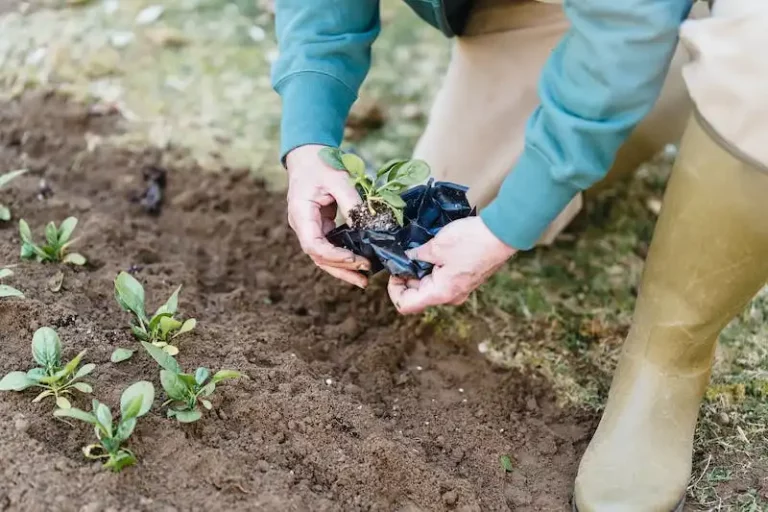Welcome to our monthly feature where we highlight a unique plant that has captured the attention of our gardening community. This month, we are diving deep into the fascinating world of the Rat Tail Cactus. This eye-catching plant is known for its long, trailing stems that resemble the tail of a rat.
Native to the sandy soils of the coastal regions of California, the Rat Tail Cactus thrives in bright sunlight and prefers warm temperatures. Its purple, tubular flowers bloom in the spring, adding a vibrant splash of color to any garden. Not only is the Rat Tail Cactus visually appealing, it is also a fast-growing and easy-care plant.
When it comes to cultivation, the Rat Tail Cactus can be planted in a variety of soil types, but it prefers well-draining soil mixed with perlite or sand. Being a succulent, it doesn’t require much water and can withstand long periods of drought. For optimal growth, it’s important to provide the plant with full sunlight and regular fertilizing.
Propagation of the Rat Tail Cactus is quite simple. Just snip off a healthy stem, allow it to dry for a few days, and then plant it in a well-draining potting mix. Within a few weeks, you will notice new roots forming and the stem starting to grow. This makes it an excellent plant choice for gardeners who enjoy sharing and growing plants.
Another interesting fact about the Rat Tail Cactus is its ability to be overwintered indoors. If you live in a region with cold winters, simply bring the plant indoors and place it in a sunny window. With proper care, it will continue to thrive throughout the winter months and be ready to go back outside as soon as the weather warms up in the spring.
In conclusion, the Rat Tail Cactus is a fascinating plant that is loved by many gardeners. Its unique appearance, easy care, and fast growth make it a popular choice for both indoor and outdoor gardens. So whether you’re a seasoned gardener or just starting out, why not consider adding a Rat Tail Cactus to your plant collection?
How to Grow and Care for Rat Tail Cactus
The Rat Tail Cactus is a unique and interesting plant that can make any garden or indoor space happy. If you’re thinking about adding this plant to your collection, it’s important to know how to properly care for it.
The best time to repot your Rat Tail Cactus is in April. If you can imagine, this cactus grows long, tail-like stems that can reach a length of 2 to 5 feet. When choosing a location for your cactus, make sure it gets plenty of bright, indirect sunlight. A window sill or patio is a great spot for it.
When it comes to watering, the Rat Tail Cactus is not a thirsty plant. It actually prefers to be on the drier side. You will only need to water it once every month during the growing season (spring and summer). In the fall and winter, you can cut back even more on watering, only giving it a little moisture every few months.
The Rat Tail Cactus is not picky when it comes to soil. It will do well in a well-draining cactus soil mix. You can also add a little sand to the mix if you live in a coastal area like California. Just make sure the pot has drainage holes so the roots don’t sit in water.
Propagation of the Rat Tail Cactus is similar to other types of cacti. You can take a cutting and let it dry out for a few days before planting it in soil. The cutting should be kept above the soil and misted regularly to encourage growth. It may take a few weeks or even months for the cutting to root and grow.
Pruning is not necessary for the Rat Tail Cactus, but you can remove any dead or damaged sections to keep the plant looking its best. Fertilizer is not needed regularly, but you can use a diluted cactus fertilizer once a year in the spring to give it a boost.
If you live in a colder climate, you can keep your Rat Tail Cactus indoors as a potted plant. Just make sure it gets enough light and is not exposed to temperatures below 50°F. If you do decide to bring it indoors, be aware that the cactus may not flower as readily as it would outside.
The Rat Tail Cactus is a low-maintenance plant that can bring a unique touch to any garden or indoor space. With the right care and attention, this cactus can thrive for many years, bringing joy to any plant lover in the community.
Rat Tail Cactus Care
When it comes to caring for the Rat Tail Cactus, there are a few important things to keep in mind. This coastal cactus prefers a lightly shaded area and well-draining soil. It tends to grow best when its roots are slightly dry between waterings. As with most cacti, overwatering can lead to root rot, so it is essential to not overwater it.
The Rat Tail Cactus grows long, trailing stems that can reach up to 6 feet in length. Due to its unique appearance, it has become a popular plant in the gardening community. Many people imagine it as a purple tail hanging down from their pots or growing outdoors in garden spaces.
When potting your Rat Tail Cactus, make sure to use a sandy soil mix to help with drainage. This will prevent the roots from sitting in water and potentially rotting. You can also add a layer of pebbles or rocks at the bottom of the pot to further promote drainage.
This cactus doesn’t need much fertilizer. You can use a diluted, balanced liquid fertilizer during the growing season, but be careful not to overfertilize. Too much fertilizer can cause the stems to grow too quickly and become weak, resulting in floppy growth.
In terms of temperature and location, the Rat Tail Cactus prefers to be kept in a bright, sunny window or outdoors in a sunny spot. It can tolerate a wide range of temperatures, but it is best to keep it in a temperature range of 60-85°F (15-29°C). Avoid exposing it to cold drafts or temperatures below 50°F (10°C).
When it comes to humidity, the Rat Tail Cactus doesn’t require a high humidity environment. It can tolerate average household humidity levels without any issues.
Pruning is not necessary for the Rat Tail Cactus, but you can trim off any dead or damaged parts to maintain a healthy appearance. Additionally, this cactus may produce small pink or purple blooms in the spring or fall, adding a touch of beauty to its trailing stems.
If you want to propagate your Rat Tail Cactus, you can do so by taking stem cuttings. Simply cut off a healthy stem section and allow it to callus over for a few days. Then, you can plant the stem cutting in a well-draining soil mix and water it lightly. In a few weeks, you should start to see roots forming, indicating that the cutting has successfully rooted and is ready to grow.
In conclusion, the Rat Tail Cactus is a beautiful and unique plant that is relatively easy to care for. As long as you provide it with the right growing conditions such as well-draining soil, bright light, and appropriate waterings, it will thrive and bring joy to any indoor or outdoor space.
Light
Rat Tail Cactus thrives in bright light, both indoors and outdoors. They prefer to be in a well-lit area, but avoid direct sunlight as it can scorch the plant. A bright window with filtered light is the ideal spot for this cactus.
While Rat Tail Cactus can tolerate some shade, it won’t thrive in low light conditions. If you notice that the stems are stretching or the overall color is pale, it’s a sign that the plant is not getting enough light.
If you plan to grow Rat Tail Cactus outdoors, make sure to place it in an area where it receives partial shade. Too much direct sunlight can cause the stems to turn purple or even burn.
It’s important to note that Rat Tail Cactus can be grown in any USDA hardiness zones, whether indoors or outdoors. However, if you live in an area with cold winters, you’ll need to bring the plant inside, as it won’t tolerate freezing temperatures.
Soil
Rat Tail Cactus thrives in well-draining soil. It is important to choose a soil mix that is specially formulated for succulents or cacti. These mixes are typically made up of a combination of materials like sand, perlite, and peat moss, which help to provide good drainage and aeration for the roots.
When it comes to care, the Rat Tail Cactus prefers soil that is slightly acidic to neutral, with a pH level between 6.0 and 7.0. This helps ensure that the plant can access the necessary nutrients in the soil for healthy growth.
In terms of watering, it is important to let the soil dry out between waterings to prevent overwatering, which can lead to root rot. The Rat Tail Cactus is drought-tolerant and prefers to be kept on the dry side. During the growing season, it is recommended to water the cactus every two to three weeks, allowing the soil to dry out completely before the next watering.
In addition to proper watering, the Rat Tail Cactus also benefits from regular fertilization. Using a balanced liquid fertilizer formulated for cacti and succulents can help provide the necessary nutrients to support healthy growth. It is recommended to fertilize the cactus once every two to four weeks during the growing season.
In terms of sunlight requirements, the Rat Tail Cactus thrives in bright, indirect light but can also tolerate some direct sunlight. Placing the cactus near a sunny window or in a well-lit location will help promote healthy growth and encourage blooming.
When it comes to repotting, the Rat Tail Cactus prefers to be slightly root-bound. Repotting should only be done every two to three years or when the cactus has outgrown its current container. When repotting, it is important to use a well-draining soil mix and provide a container with drainage holes to prevent water from pooling around the roots.
Some common pests that can affect the Rat Tail Cactus include mealybugs and spider mites. Regularly inspecting the plant for any signs of pests and treating them promptly can help ensure the health of the cactus.
In conclusion, providing the proper soil is essential for the Rat Tail Cactus to thrive. Choosing a well-draining soil mix, ensuring the right pH level, and properly watering and fertilizing the cactus will help promote healthy growth and vibrant blooms. By taking care of its soil needs, you can enjoy the beauty of this unique cactus for many years to come.




